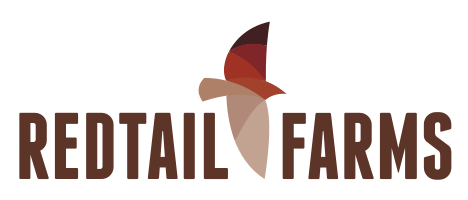Third-generation farmer Ian Griebel always knew that feeding his livestock a grass-based diet was the best way to get the best quality product. Now, with research from the University of Toronto, he has the scientific data to back it up. “It gives me a lot of confidence to sell our meat,” he says.
The research he’s referring to comes from U of T’s Dr. Richard Bazinet—a neuro-lipid chemist who studies and compares the fatty acid content in grass-fed meats, milks, and eggs with that from store-bought, grain-fed meats, milks, and eggs. Through his research, he’s found that grain-fed beef has an omega-6 to omega-3 ratio of up to 40 to 1. Grass-fed beef, on the other hand, has a ratio as low as 3 to 1—which is where Griebel’s weighed in. “It is kind of a bit of shock for me to see the amount of variation in the food supply,” Bazinet says. “I don’t think we should call a meat a meat a meat.”
Griebel, who runs RedTail Farms in Castor, Alta. with his wife Dana Blume and son Cohen, was one of about a dozen Alberta producers to send samples of meat to Bazinet—the results of which were revealed at the Organics Alberta and Holistic Management conference in Lacombe at the end of February.
Luka Symons, a RedTail Farms customer and holistic nutritional practitioner, says the results of Bazinet’s research, and what Griebel is doing with his animals, is “important on so many levels.”
“They call [omega-3s and omega-6s] essential fatty acids, because they are
essential
. We cannot make them in our bodies. We need to look to our diet in order to provide those fats to us,” she says.
Omega-3 and omega-6 fatty acids are integral to the body’s ability to deal with inflammation. While in some cases inflammation is good for the body—in healing a wound, for instance—it’s also at the root of dozens of chronic diseases, from skin problems like acne, to nervous system disorders like ALS, to the big ones like cancer. “You need two omega-6s for every one omega-3 for that process to work, and the way that North Americans currently eat, it’s closer to 20 to 40 omega-6s for every one omega-3,” Symons says.
LISTEN: Luka Symons on Omega-3s and Omega-6s and their role in our bodies
“When [the animal] is eating the diet it was supposed to eat, the diet that a cow had naturally evolved to eat, and that the pig evolved to eat, then their inflammation is drastically lower themselves because they’re eating how their ancestors ate.” This, she says, translates directly to the inflammation experienced by the humans who eat those animals. By eating RedTail Farms meat, Symons says she’s actually eating anti-inflammatory support.
“If you’re eating an animal that’s been fed a sub-par diet, you’re going to be ingesting a sub par product at the end of the day,” she says. “You’re getting what you pay for when it comes to meat.”
For Griebel, Bazinet’s current research, and continued research, will help separate the farmers who are genuinely concerned about the health of their animals and customers, and the ones who are just jumping on the grass-fed trend. “If a person is lying about what they’re feeding their animals—so in particular, a grass-fed animal—if they’re feeding them some grass, and then finishing them on grain, this is when the results will actually detect that person,” Griebel says. “You can catch the cheaters.”
LISTEN: Ian Griebel on how we got to this point
Bazinet says the samples of chicken and pork get complicated, because both meats have “fish oils” in them—or the same omega-3s we commonly associate with fish. “I would actually go on the record in saying I have seen more fish oils in some of these chickens than I have seen in some farmed tilapia,” Bazinet says. “It’s never going to be a wild salmon, but it is getting into that lower range of fish.”
This type of discovery tears apart the rhetoric nutritionists, dieticians and doctors have been usings for decades: that we need fish in our diet to give us optimum levels of omega-3s. In a landlocked province like Alberta, the environmental costs (not to mention the ethical costs) of shipping the amount of fish needed to get us into that range could be mitigated by introducing a combination of grass-fed and grass-finished chicken, grass-fed red meats, and grass-fed by-products like eggs and milk.
LISTEN: Richard Bazinet on replacing fish oil with grass-fed chicken
Even the omega-3 enhanced eggs at the grocery store (which simply means the chickens were fed flaxseed) were put under scrutiny. “These pasture-raised eggs probably won’t quite meet the definition of a high omega-3 egg that you can buy on the shelf,” Bazinet says, “but they are pretty close and they are not even trying. They are not even doing that consciously.”
Griebel sees that unconsciousness, that ease, as being integral in an environmentally sustainable, and ethical, agricultural future. “As humans we love to try to really manipulate things,” he says, “and I think the key to our success in agriculture, in particular, is really looking at the natural system—what has billions of years of evolution created on this planet?”
